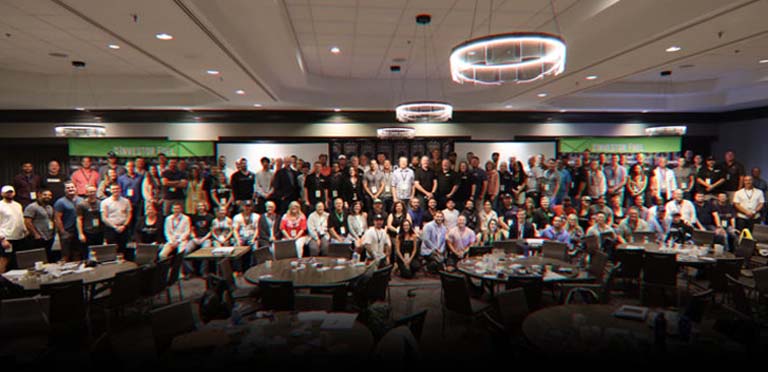
Show Summary
In this conversation, John Harcar interviews Jared Garfield, a seasoned real estate investor, about his journey in the industry, the importance of having a proven blueprint for success, and the challenges faced in flipping properties. Jared shares insights on market analysis, investment strategies, and the significance of mentorship. He emphasizes the need for new investors to understand market cycles and to save cash flow for future investments. The discussion also covers finding the right property manager and the resources available for aspiring investors.
Resources and Links from this show:
Listen to the Audio Version of this Episode
Investor Fuel Show Transcript:
John Harcar (00:00.739)
All right. Hey guys, welcome back to our show. I’m your host John Harcar and I’m here today with Jared Garfield and guys working today. We’re going to talk about not only his his background of real estate and business, but we’re going to talk about how to really make sure you have a blueprint, right? Make sure you have the right design to follow. Remember guys that investor fuel we help real estate investors, service providers, really all real estate entrepreneurs, two to five extra business.
And that’s by providing tools and resources to grow the business they want to grow and in turn helps them live the life that they want to live. Jared, welcome to our show.
Jared Garfield (00:36.684)
Hey John, thanks for having me. I’m looking forward to spending some time with you today.
John Harcar (00:39.915)
Yeah, definitely. And I like what we talked about prior to getting on air. And I’m excited to talk about a blueprint, right? I think a lot of people don’t go in with something solid, proven, know, attract to follow. But before we get into all that, let’s talk about you real fast. Tell us a little bit about you, your business, you know, your experience in real estate and kind of what brought you to today.
Jared Garfield (01:01.474)
Well, I started buying investment properties when I was in my early 20s. I was attending the University of Georgia and I took a student loan out and decided to use a student loan to go buy a prop investment property up as a bank foreclosure that I bought for $10,000. Then after taking a Carlton Sheets course, I went and got a title loan against a V8 Firebird Trans Am with a T-top, a big V8 with a blower. It was a 2001.
John Harcar (01:13.304)
I love it.
John Harcar (01:18.113)
Yeah
John Harcar (01:24.087)
Mmm, nice. What year?
John Harcar (01:29.09)
Okay.
Jared Garfield (01:29.466)
And they don’t make those anymore, but I went out and got a title loan against the paid off car and bought a second property and flipped those two properties while I was in college. Came home, I was a semester away from graduating. I told my brand new wife, we were newlyweds. I said, I withdrew from the University of Georgia. And I was like 12 hours from graduation. said, I’m flipping these houses and we just sold one and made $40,000 on it. And I’m sure if I can repeat that, you know, four times a year, we’ll make a much bigger income.
And so why in the world do I want to head to law school and take tons of debt? And so I think my wife about had a heart attack. And then my mom, had a PhD, we didn’t find out until a semester later, and she just gasped, but it’s turned out very well.
John Harcar (02:01.752)
Right.
I can imagine. That’s a big change immediately.
John Harcar (02:15.779)
So what were you studying in college?
Jared Garfield (02:19.032)
political science, was headed for law school, I did go back and finish the degree. But the truth is, I almost wish I would have just started in real estate a little bit earlier, but it was a good education and I very much enjoyed it.
John Harcar (02:33.399)
How did you come across the Carlton Sheets and how did you that first intro to real estate? I was there any influences in your life? Was there anybody you knew in real estate?
Jared Garfield (02:42.862)
So my grandfather had been president of the Utah Board of Realtors and he had had a heart attack in 1987 because he didn’t do his real estate portfolio correctly. He had developed subdivisions, he had rentals, he lived in a beautiful big Victorian mansion, very successful, had a private plane and everything. But what ended up happening was around 1987, the federal government changed the rules on coalmine.
coal. so the coal mining industry really went belly up fast. And he had just developed class A, like 120 unit apartment complex in Price, Utah. And so all these class A apartments that were filled with people who had very high incoming jobs, because it was a high risk job working in the coal mines, they all got laid off, and he didn’t have any tenants. So he went to some doctors and some attorneys that invested with him and said, you know what?
signed it over to me, I’ll go ahead and take the losses for everybody. And he took a lot, took, took the losses and had a massive heart attack and died. I think he was 62 years old. And I used to spend a lot of time as a child in his real estate office. And I, it was kind of crushing to me. And as I got older, I realized that if you didn’t understand macroeconomics and understand how things worked, that if you, that real estate could make you very wealthy as it had my grandfather, but you could also, it could also break you against the rocks.
and you can have severe problems if you didn’t plan well and have a successful blueprint.
John Harcar (04:10.499)
Yeah, no, 100%. So when you started getting into the flipping and you did this first two houses, what were some of the struggles as you continued to grow that type of business?
Jared Garfield (04:23.116)
Well, you the problem with flipping is, you know, you make very good income, but it’s also heavily taxed. And you have to start over at the beginning of each month or each quarter. You have to go find new properties to flip. Market cycles affect whether there’s good deals or not. You know, and then on top of that, you’re managing construction crews. And that can be a real nightmare in and of itself. If they finish six months late and you’re at a 10 % interest rate, all your profits can get chewed up real fast.
John Harcar (04:50.883)
So how did you learn? you seek out, because I know we talked about, know, having a blueprint, learning from someone that’s been there. Did you seek out any mentorships? Did you seek out any coaches? You know, someone that can kind of shorten the process for you?
Jared Garfield (05:07.662)
Well, what I did actually, I went to a lot of real estate investment associations and I talked to a lot of investors that had been doing it for a long time that were in their 50s and 60s. And I would take them out to lunch and pick their brains to learn a little bit. But after doing probably 30 to 40, I got hired on to work with the Rich Dad Poor Dad staff. And I was working with Robert Kiyosaki and I kind of felt that by working with their coaching team, there were a lot of guys that had owned mobile home parks and apartment complexes. So I was in my late 20s by this point.
And so by coaching thousands of clients and working with a staff that had done a lot of real estate investing, I was able to really supercharge because when you’re coaching and training others, if you’ve done 40, 50 deals at the time, and you’re working with people and helping them build portfolios, I worked with over a thousand clients and helped them buy thousands of properties over a three year period. So that really helped me gain a great knowledge base, especially because
I became aware of markets all across the country. And so I ended up building a spreadsheet that analyzed 278 markets across the country on like 80 different metrics to be able to know where the best places in the country were to invest.
John Harcar (06:05.859)
Mm-hmm.
John Harcar (06:17.197)
wow, okay, and that’s something like a formula you developed or how did you come up with all that?
Jared Garfield (06:22.51)
It was a spreadsheet and it’s all publicly available data, but it’s things like what the appreciation has been over the last five years, the last quarter, the last 20 years, the last year, just kind of knowing the appreciation and where it is, knowing the job growth, the population growth, and stuff like that, population loss, economic growth, unemployment, vacancy rates. There were about 80 different metrics that we tracked, new building permits, population moving in, population moving away.
you know the education climate property tax and how that affects cash flow just different things like that and by updating that every year i was always able to kind of move into the hottest markets as the markets would change we would take our clients to different markets
John Harcar (07:04.131)
Yeah.
Okay, now when you say you take your clients to different markets, what do you mean?
Jared Garfield (07:11.202)
Well, so like in 2007, I was advising my clients when I was working with Rich Dad Poor Dad, I said, look, we’re gonna have a real estate bust. I said, I can’t predict when it was gonna be. I had no idea it was six months away, but I was advising my clients to say, look, if you’re in California or Miami or Arizona, there’s no way that you can invest. Oregon, Washington, those states had gone up 25 % a year for five straight years. I said, we’re gonna bust. It’s not affordable. You can’t make money. And people were trying to flip in California and they go buy a place for…
John Harcar (07:22.531)
Mm-hmm.
Jared Garfield (07:40.462)
400,000, dump 100 grand into it, hoping they could make 100,000. But if the market were to correct, they could be upside down and the property could sell for less than what they had in it. And so I took clients at the time to Kansas City where they could buy 1978 split levels for $42,000, do 12 or 15,000 worth of rehab, and they would have 30 to 40,000 instant equity, but they could cash flow four to $500 a month.
on a down payment that was like 12 grand. And so it just allowed you to do a lot more because you could take that same investment dollar that would be in California might require 150,000 down and by putting 15,000 or 20,000 down, you could get five or six properties that might cashflow 2400 a month instead of a property that was negative leverage until you flipped it.
John Harcar (08:32.195)
Got it. Okay. So as you built, many homes were you getting up to flipping a month? Like what are you doing now?
Jared Garfield (08:38.904)
Well, we got up to where we were selling turnkey properties to cashflow investors because I really believe that the true wealth in real estate investing is in buying and holding in markets that have some cash flow. You want cash flow, but cash flow isn’t nearly as important as being in markets that are going to appreciate well and double in five or six years. And so what we did is we started selling turnkey investment properties throughout the country. We’d have clients from all across the country that would source
30 to 40 properties a month that we would buy and renovate and provide to the clients.
John Harcar (09:14.541)
Huh, okay, and you set it up in the south bend area?
Jared Garfield (09:18.028)
Yeah, we did South Bend, Indiana, Birmingham, Montgomery, and Huntsville, Alabama, Atlanta, Georgia, and its surrounding metros, Macon, Georgia, Columbus, Georgia. And then we also got into Quad Cities, which is Davenport and Malene and East Malene, Bettendorf, Iowa, and then also St. Louis.
John Harcar (09:34.435)
Okay. And so let’s talk about your business a little bit. mean, how are you marketing to all these places? What does your lead generation look
Jared Garfield (09:43.374)
Well, for us, we sold a lot of properties through Marco Santarelli with Nerada. We sold a lot of properties through Cathy Fecchi with Real Wealth Network. We’ve sold a lot of properties through TaxLink code. There were a lot of different clientels. In fact, we used to provide the properties for Trump University when he had an educational course, people would buy properties and stuff like that. And it’s funny that that one ended up in kind of a scandal on the media. But the truth is, with real estate investment coaching,
What I found as a coach is a lot of people will pay 20 or $30,000 for training, but then they don’t do any of the work. can’t tell you how many times as a trainer that people would show up and they hadn’t done any of their assignments for two and three weeks in a row, even though they had paid a lot of money. And then they complain because they didn’t get something out of it, but they didn’t put anything in. And if you don’t do the work, you’re not going to get results. anyway, we would sell through a lot of those types of things, also the MLS. And so we really never had to spend a lot of money on lead gen.
Because what we found is if you rehabbed the property way higher level than what other people were, you always filled it with tenants quickly, you got higher rent, you got better quality people. So we would do granite or quartz countertops, we’d do tile backsplash, subway tile showers, and just really make things nice. The hot water heaters were new, the HVAC, the roof, most everything was new. And so that meant that when you were buying turnkey, you didn’t have to worry about buying something.
and then having major problems in your first five years.
John Harcar (11:13.571)
Were you buying from acquiring from wholesalers? you doing, you know, buying direct to seller, buying off the MLS? What were you, how are you acquiring the product?
Jared Garfield (11:23.736)
There’s great deals everywhere. I the MLS, if you really low ball properties that have been sitting on the market for a very long time, you can get some great deals. But we with a lot of wholesalers that came to us first because they knew we were buying in volume. know, some wholesalers, there’s a lot of them out there that are just marking up somebody else’s junk. There’s a lot of daisy chains. But the thing is, if you can get into the right wholesalers, every market has one or two really good ones that know what they’re doing.
John Harcar (11:44.525)
Yep.
Jared Garfield (11:51.63)
and if you can get in with them and they can bring you the deals first, wholesalers could be a great resource. We bought a lot of bank foreclosures. Early on, between 2007 and 2013, there were so many bank foreclosures that the bank REO departments, the Fannie Mae, Freddie Mac, and HUD were plentiful until they started selling to the major Wall Street funds and they gobbled them up before the small mom and pop investors could get them.
John Harcar (12:16.791)
Got it, that makes sense. Let’s talk a little bit about our topic for today and that’s having a blueprint, right? We know that a lot of people get into it and because on the internet, everybody makes it look so easy, right? I did this, I got a $50,000 check, it was one call. Tell us why it’s important to have a blueprint that has been proven, that has been done.
Jared Garfield (12:39.042)
I love those internet things. take the one great deal they did out of 10 and show you the checks and then they ignore the four or five where they broke even or lost money. know, and they say people who can’t do teach. Sometimes that’s true because it’s a whole lot easier to coach and train even if you were successful in a big way five years or 10 years ago. But the markets always change even when you’re an expert. It is harder right now to produce great assets than it’s ever been in 20 years.
John Harcar (12:43.586)
Yeah
John Harcar (12:47.957)
or lost money,
Jared Garfield (13:06.766)
The affordability of housing is worse than it’s ever been. It’s worse than it was before the crash in 2007. The prices have doubled in five years and the mortgages also doubled in their interest rates in five years. So it’s very unaffordable, very hard to cashflow right now. So for me, having a blueprint means you’ve got to go to somebody who has already done it. They should already be out of the rat race. And so for me, what I did,
was I learned after doing Turnkey and after owning 250 of my own investment properties that I was owning and managing, I realized that it almost became a bigger liability, that the more properties I had, even though I had really good cash flow, it wasn’t passive when you got to 250 properties. Even with a property manager, you still had to be managing the manager. And what I found was when you have 250 properties, there are so many things that can go wrong that if you’re not saving the cash flow,
you end up in worse financial shape than you would be if you didn’t own the properties, if you’re not saving the cash flow. So what we did is we came up with a blueprint and we said, okay, the first thing we’re gonna do is we’re gonna diversify the asset class. You can’t have nothing but C plus duplexes with low income tenants in them because they’re heavily management intensive. The properties tend to have a little bit more problem because they tend to be older. And so there’s more maintenance even if they’re fixed up.
John Harcar (14:23.778)
Yep.
Jared Garfield (14:30.446)
Okay, so what we did is we said if you want to buy a few of those, because that’s all the down payment money you have to start with, fine, start there, but save the cash flow. Then your next purchase needs to be an Airbnb in a B plus to A minus neighborhood that’s going to appreciate really well and that’s going to net you 25 to $40,000 a year. Because if you save that $40,000 a year in net cash flow,
and you put it into a product that grows tax free, we found that there’s some excellent products in the financial services industry that you could save between 6 and 11 % per year with no downside, and you could put the money away and have access to 90 % of the money if you max funded it so you could pull it out to cover emergencies and it made the real estate safer.
John Harcar (15:07.661)
Mm-hmm.
John Harcar (15:18.135)
Hmm. I love it. So if someone is kind of getting into the business now, mean, what kind of I know you gave some good advice already as far as, you know, the C plus level, but then by the short term rental, what other advice would you give someone trying to get into the real estate game today, whether it’s flipping, whether it’s short term, whether it’s buy and hold, what advice do you think would help someone get off on the right foot?
Jared Garfield (15:43.416)
Well, the first thing is you need to be able to find the right market because market cycles have been very difficult. There’s many, many markets across the country right now that I would say that you probably need to sit out and wait and start gaining knowledge and learning about real estate investing and spend a year or two just gathering the information and learning. Because if you’re not willing to invest out of state where the markets might be great and they might have already bottomed out and you might be able to get a great deal.
there’s a lot of markets where it just doesn’t make sense to go in and you could end up losing. And by buying at the wrong time in the market cycle, if your market goes down by 10 or 15%, you could end up being upside down, especially when you consider that if you have to sell, you have to pay real estate commissions, closing costs, and different things like that. And so right now it’s studying the market cycle and learning to know whether or not your market even makes sense to invest in. And if it does not,
finding a market outside your market where you have experts on the ground that can do a lot of the work for you. Because if you’re a busy business professional, you don’t need to go out and buy a foreclosure and manage the renovation yourself. I’ve actually found myself that even I even buy turnkey from other people sometimes because a lot of times if they’ve done all the work for me and it’s completely done by the time I take the risk of buying and renovating the property, sometimes you don’t really have any more equity.
John Harcar (16:59.107)
Great.
Jared Garfield (17:06.808)
but you have a lot more risk.
John Harcar (17:08.791)
Right, well yeah. So let’s put you on the spot here. Give me three markets to stay out of and three markets to go into.
Jared Garfield (17:16.908)
Well, I guess it depends on what you’re wanting to do, whether you want to do a flip, because some markets I would stay out of because they’re not good flip markets if I’m a flipper and other markets would be a good flip market. In a flip markets, you’re going to want to generally be in something that has huge population growth. This has really got a lot of jobs moving to the area. So right now, from a flip market standpoint, I really like markets like Huntsville, Alabama has been great the last several years.
It’s kind of topped out, but they moved the headquarters to the FBI there. Blue Origin started building their rocket engines there. A big Toyota plant opened up. we did probably 1,200 flips in the Huntsville market. Now that’s kind of heated up. They’re kind of overbuilt. And so I would stay away from Huntsville now, but it was red hot for four or five years. A market that I really like right now is Charlotte. Really the whole Southeastern United States right now, Florida.
South Carolina, Tennessee, Georgia, these are the markets where a lot of people are moving. It’s still relatively affordable. The property taxes are pretty low. You can do very, very well in those markets. From a cash flow standpoint, you’re looking a lot at the Midwest, Indiana, Ohio, but you got to be careful with some of the Rust Belt cities in Ohio. But Columbus is a strong market with really good jobs.
John Harcar (18:15.874)
Good job.
John Harcar (18:27.619)
Got it.
Jared Garfield (18:42.274)
Fortune 100 headquarters presences and stuff like that. But a lot of the Midwest can be really pretty good. South Bend, Indiana has been tremendous for us for seven years. That’s been a great multifamily market with really high rents, good demand, and we have great property management. And see, some of it depends. You can go into a great market, but if you can’t find good property management, that really becomes a problem. It doesn’t matter how good the property is if you can’t get a good property manager.
John Harcar (19:05.616)
yeah, 100%.
John Harcar (19:10.593)
What are some of the best ways to find the best property manager, maybe the best questions to ask a property manager if that’s who you want to use?
Jared Garfield (19:18.36)
Whoa, well, you know, the first thing is to Google and really look at the Google reviews. Now understand that almost no property manager is going to have good reviews because the tenants are always lambasting property managers. So that doesn’t necessarily mean that they’re bad, but I’d want to talk to several of their owners. I would want to be able to look at their portfolio a little bit and find out what’s their vacancy rate across the board. How long are they taking to fill properties? What percentage of the rent are they collecting on a monthly basis? What percentage pays late is a good thing. What do they charge for evictions?
How much are they marking up maintenance? Is it just 10 % or do they charge you 10 % on a roof? If it’s $10,000, $1,000 for coordinating a phone call on a roof sure seems like a lot. So there’s a lot of questions that you want to ask. How often will they pay you quickly? How well do they answer their phones? Are you going to be able to talk to the owner, to the broker who owns the business? Or are they going to put you off on a staff member?
John Harcar (19:59.512)
Yeah.
Jared Garfield (20:18.16)
You know, stuff like that. That’s important. And if you live in California, which a lot of our investors do, if you live in California and they’re on the East Coast, you’re going to have to catch them after hours. Are they even going to be available to you after hours when it’s convenient for you to talk? So those are some good things.
John Harcar (20:34.115)
Yeah, no, that makes sense. Do you have a coaching program or is there anything that you offer folks to help them get into the investing, buy turnkey, things like that?
Jared Garfield (20:45.004)
We not only have a coaching program that’s very affordable, we have a study at home course that’s as low as $399, it’s 12 weeks, because it covers everything from market cycles to A class versus B class versus C class, what to look for in a property manager, how to interview property managers, how to interview turnkey providers, how to pick the right properties, just all kinds of different things. How to 1031 exchange and how to know when to sell a property, how long do you hold?
when’s the best time to exit the property when your tax advantages are all dried up. So we have that. We also have a software package that analyzes investment properties and gives you a full dashboard and tells you how well it cash flows and different things. And we’ve got a marketplace of turnkey properties. So if you’re looking for properties, we usually have anywhere between 50 and 75 properties available that are duplexes, fourplexes, eightplexes, and also Airbnb properties as well.
John Harcar (21:43.683)
That’s awesome. Well, that’s a great network. So how do they get a hold of you? How do the folks reach out and get in touch with you?
Jared Garfield (21:48.79)
Our website is ROI, like return on investment, it’s ROIWealthWatch.com and we’ve got 60 to 70 podcast episodes people can listen to there as well to just learn at no cost.
John Harcar (22:01.827)
Nice. Okay. Do you have your own podcast as well?
Jared Garfield (22:05.922)
We did a podcast for a lot of years and had a Fox News radio show too, but we haven’t been doing it as of late. I probably need to pick it back up again.
John Harcar (22:13.547)
Yeah, I get that name. I get that word out there. Well, Jared, man, I appreciate you coming on here. And you shared a ton of great knowledge. I I took some great notes. Any last words for our audience?
Jared Garfield (22:24.814)
You know, think the biggest thing right now is make sure that you’re saving your money from your cash flow. The biggest thing that I preach for all my investors, no matter how successful they’ve been, is that if you can go and take the money and save the cash flow from your tenants in a vehicle that’s 90 % liquid, but also allows you to pull the money out to cover expenses and losses, but grows anywhere between 6 and 11%, doesn’t participate in market losses, that is a great strategy to do because some of these financial products will also give you a 6
figure passive income at retirement that the tenants have paid for so you’re making another 200 grand a year while also pulling the money out to harvest for down payments to grow your portfolio.
John Harcar (23:07.619)
Guys, reach out. sounds like, I mean, we could have probably gone on this for a long time. But I appreciate you, sharing all this information. Guys, I hope you had a great show. I know I did. And I’ll look forward to seeing you on the next one. Thank you, Jared.
Jared Garfield (23:20.376)
Thank you, John. Good visiting with you. You guys are a great organization. It was an honor to spend some time with you.
John Harcar (23:25.195)
Awesome, thank you. Guys, have a good one. See you next one, cheers.






